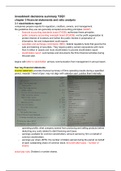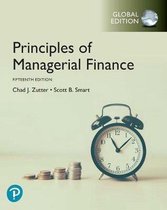Summary
Summary investment decisions year 2 Q1, chapters 3/4/6/7/9 including powerpoints
- Course
- Institution
- Book
Summary investement decisions year 2 Q1 Avans hogeschool International business, chapters 3/4/6/7/9 including powerpoints of training sessions. Principles of Managerial Finance.
[Show more]




